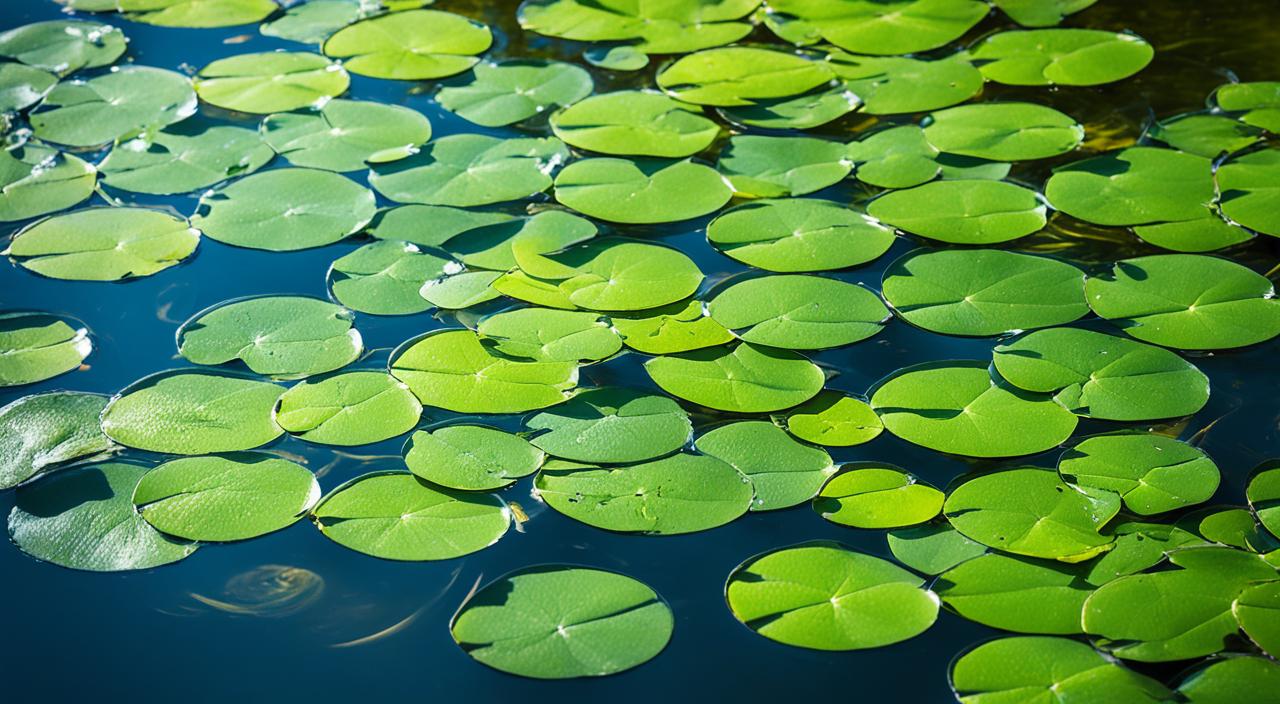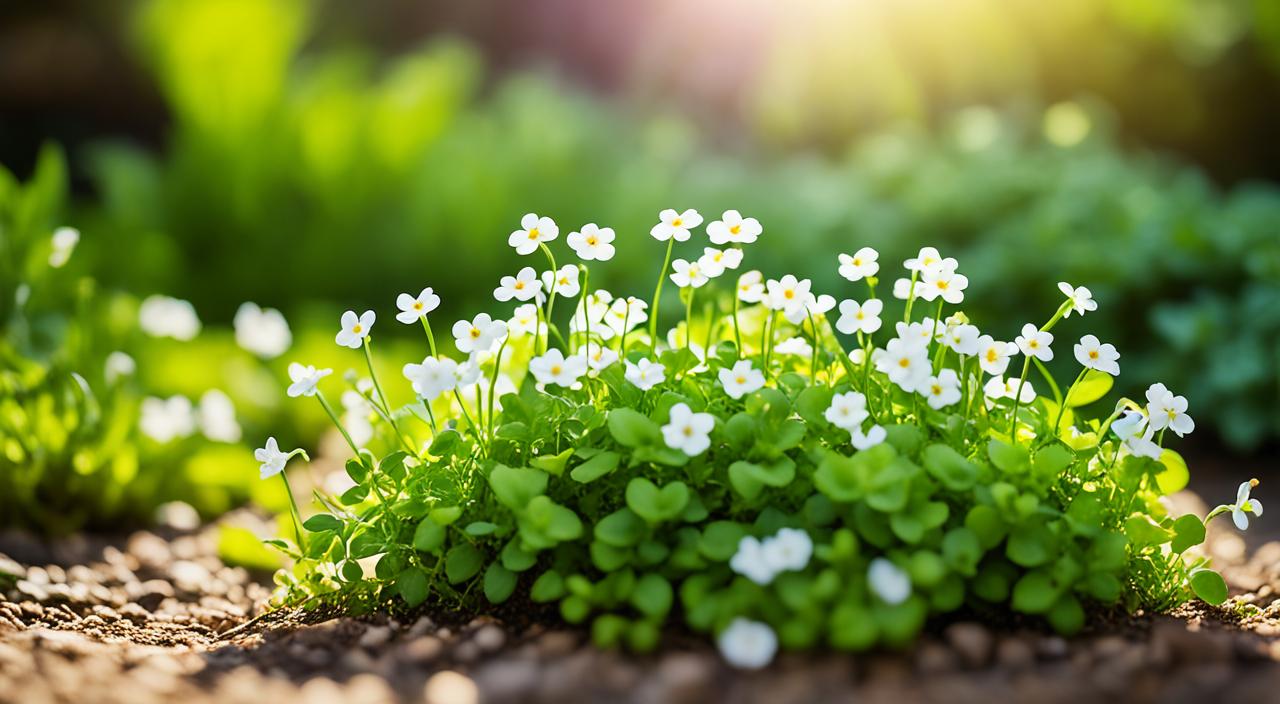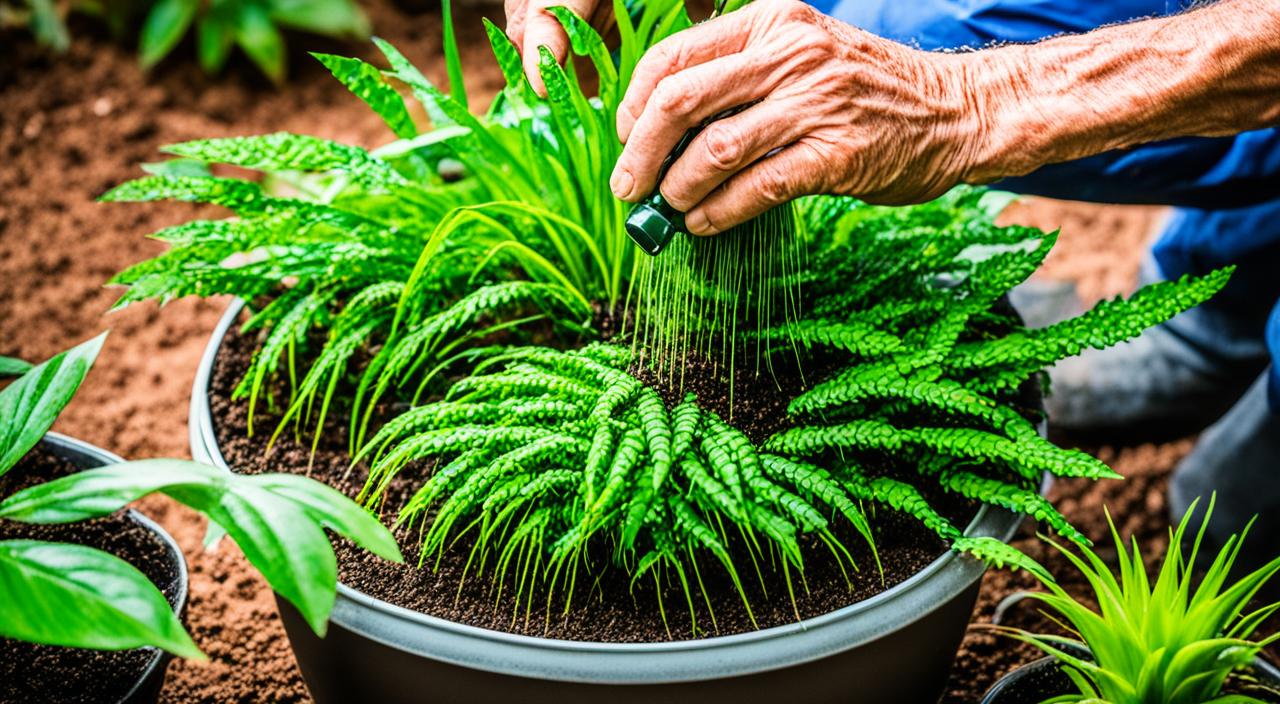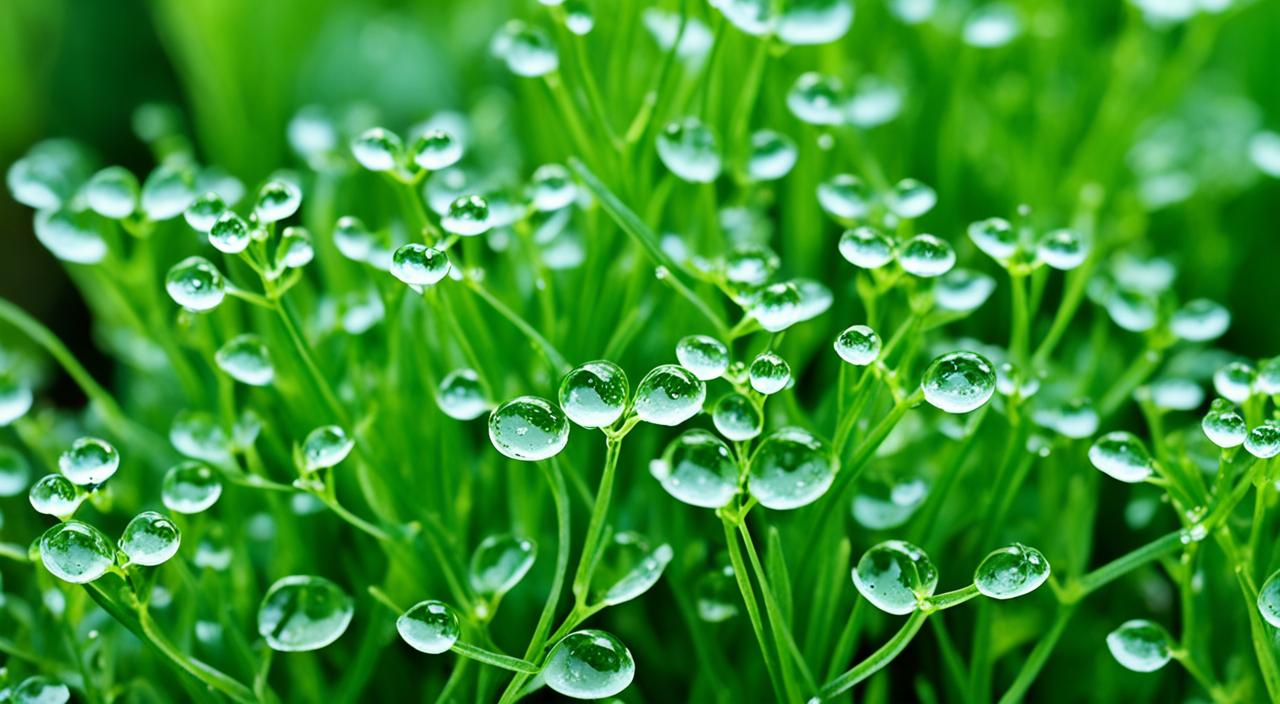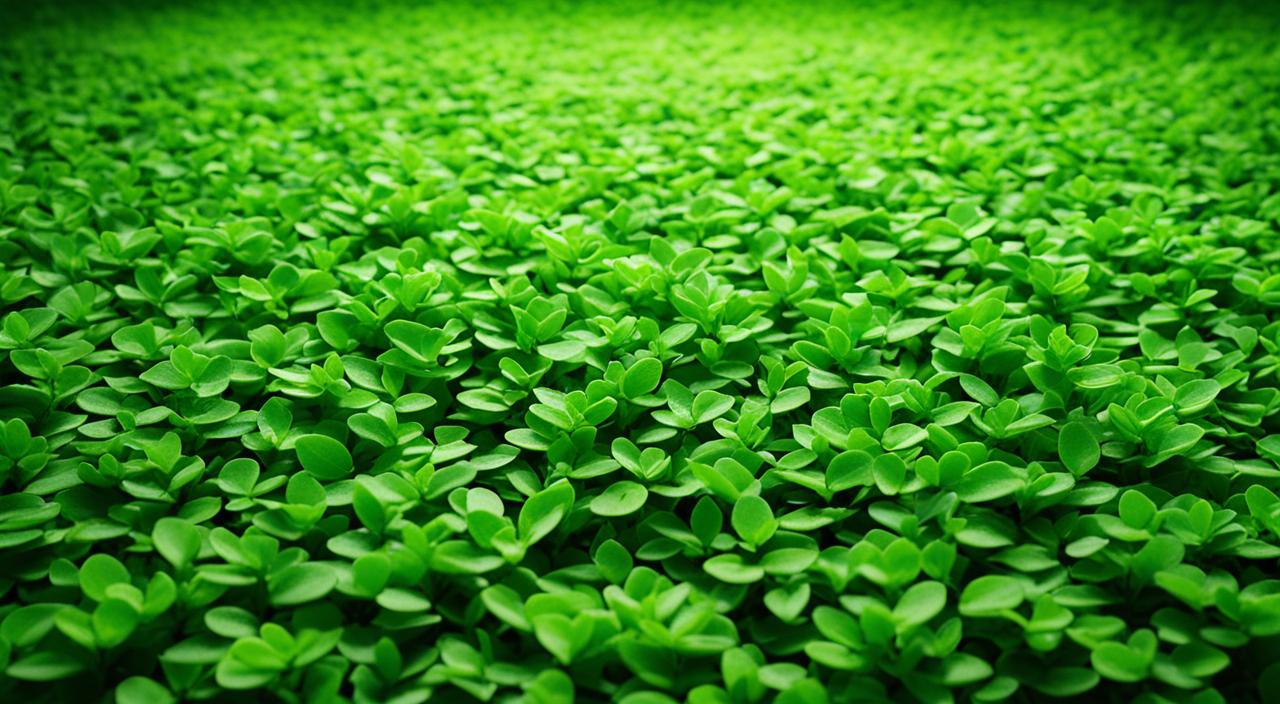Welcome to my Lilaeopsis care guide! If you’re looking for low-maintenance aquarium plants that can transform your underwater landscape into a stunning, lush carpet, then you’re in the right place. In this article, I’ll provide you with all the essential information you need to know about Lilaeopsis, from its origins and morphological characteristics to placement and lighting requirements, tank mates, feeding and fertilization, CO2 injection, care parameters, aquarium maintenance, and joint health issues. Let’s get started!
Key Takeaways:
- Lilaeopsis is a widespread genus of aquatic plants known for its grass-like appearance and ability to form a dense aquarium carpet.
- There are several species of Lilaeopsis, with Lilaeopsis brasiliensis and Lilaeopsis mauritiana commonly used in aquariums.
- Lilaeopsis is native to the Americas and thrives in waterlogged environments with ample sunlight and nutrient-rich substrate.
- These low-maintenance plants require moderate to high lighting and can coexist peacefully with small and peaceful fish species.
- Fertilization and CO2 injection can enhance the growth and health of Lilaeopsis, but it’s essential to maintain proper care parameters, water quality, and filtration.
Brief Overview Of Lilaeopsis
Lilaeopsis is a genus of several species of flowering plants in the family Apiaceae. Commonly known as grassworts or microswords, Lilaeopsis is widely used as a decorative plant for the foreground of aquaria. There are currently 12 accepted species of Lilaeopsis, including Lilaeopsis brasiliensis and Lilaeopsis mauritiana, which are commonly used in aquariums. These plants have thin and narrow leaves that grow upright and can form a dense carpet when planted densely.
Lilaeopsis Species Information Table:
| Row Names | Descriptions |
|---|---|
| 1. Scientific Name: | Lilaeopsis spp. |
| 2. Common Names: | Brazilian Micro Sword, Water Grass |
| 3. Origin: | Various, including South America and New Zealand |
| 4. Height: | 2-5 cm (0.8-2 inches) |
| 5. Growth Rate: | Slow to Moderate |
| 6. Colour: | Bright Green |
| 7. Aquarium Placement: | Foreground, Carpeting Plant |
| 8. Water Type: | Freshwater |
| 9. pH: | 6.5-7.5 |
| 10. Care Level: | Easy to Moderate |
| 11. Light Requirements: | High; 50-70 PAR (Photosynthetically Active Radiation), 5000-7000 Kelvin, 30-50 LUX |
| 12. CO2 Requirements: | Recommended for optimal growth |
| 13. Temperature: | 20-26°C (68-79°F) |
| 14. Flow Rate: | Moderate |
| 15. Propagation: | Runners |
| 16. Feed Type: | Root feeder; benefits from nutrient-rich substrate |
Expanded Light Requirements:
- PAR (Photosynthetically Active Radiation): Lilaeopsis spp. Thrive under high light conditions, with an ideal PAR level of 50-70. This light level supports vigorous growth and helps the plant develop a dense carpet.
- LUX: LUX is not a direct measure used for plant growth (as it measures human-visible light); for a high-light requirement plant like Lilaeopsis, aiming for 30-50 LUX can be a good starting point. However, focusing on PAR values is more beneficial for plant health.
- Kelvin Scale: The best colour temperature for promoting growth in Lilaeopsis spp. Ranges from 5000 to 7000 Kelvin. This range simulates the bright, daylight conditions under which these plants thrive, promoting photosynthesis and healthy growth.
Adjusting light conditions to meet these requirements, along with proper CO2 supplementation and nutrient availability, can significantly enhance the growth and appearance of Lilaeopsis in an aquascape.
Origins And Habitat
Lilaeopsis is a genus of aquatic plants that originated in the Americas. These plants can thrive in various marine habitats, including marshes, swamps, and along the banks of streams and rivers. Lilaeopsis is well-adapted to living in waterlogged environments and can tolerate many water conditions.
These plants prefer areas with ample sunlight, essential for their growth and development. Sunlight provides the necessary energy for photosynthesis, allowing Lilaeopsis to convert light into nutrients. Additionally, Lilaeopsis thrives in nutrient-rich substrates, such as sandy or loamy soil, which provide the necessary nutrients for healthy growth.
The image below showcases the natural habitat of Lilaeopsis, highlighting its preference for aquatic environments:
Morphological Characteristics
Lilaeopsis plants are known for their distinctive characteristics and striking appearance in aquariums. These plants feature thin, narrow, green leaves, adding a vibrant touch to any aquascape. The leaves grow upright and can reach a height of up to 5 cm, creating a visually appealing carpet-like effect when densely planted. With their grass-like appearance, Lilaeopsis plants provide a natural and aesthetic appeal, resembling a well-manicured lawn underwater.
Take a look at the image below to see the beautiful Lilaeopsis plants in action:
Placement And Lighting
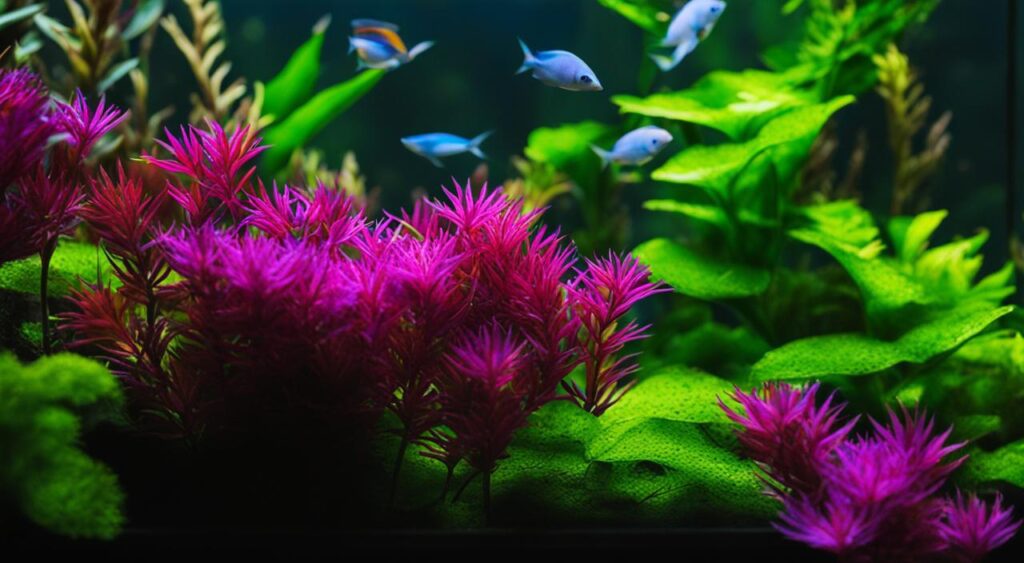
Lilaeopsis is best suited for placement in the foreground of aquariums. It should be planted densely to achieve a carpet effect. These plants require moderate to high lighting to thrive. Providing ample light will promote healthy growth and prevent the plants from becoming leggy or pale. LED lights or fluorescent lights are recommended for aquariums housing Lilaeopsis.
To create an optimal environment for Lilaeopsis, it is crucial to consider the placement and lighting conditions in your aquarium. Placing the plants in the foreground adds visual interest and allows them to receive sufficient light for photosynthesis.
Lilaeopsis, being a high-light aquarium plant, requires moderate to high-intensity lighting. LED and fluorescent lights are commonly used to provide the necessary light spectrum for optimum growth. These lights balance energy efficiency and brightness, ensuring that your Lilaeopsis plants receive the right light.
It is essential to position the lights properly to ensure an even distribution of light throughout the aquarium. Placing the lights too close to the plants may result in excessive heat and potential damage, while placing them too far away may not provide enough intensity for the plants to thrive.
When setting up your aquarium, consider the specific lighting requirements of Lilaeopsis and choose the most suitable lighting fixtures. Regularly monitor the intensity and duration of the light to ensure that it meets the needs of the plants. Adjustments may be necessary to accommodate plant growth changes or other factors affecting light penetration.
What Are Good Tank Mates?
Lilaeopsis is a peaceful plant that can coexist with various fish species. Good tank mates for Lilaeopsis include small and peaceful fish, such as neon tetras, guppies, rasboras, and dwarf corydoras. These fish species will not disturb or uproot the plants. Avoid keeping large and aggressive fish, which may damage or consume the Lilaeopsis.
| Compatible Fish | Avoided Fish |
|---|---|
| Neon Tetras | Cichlids |
| Guppies | Angelfish |
| Rasboras | Oscars |
| Dwarf Corydoras | Piranhas |
Feeding (Fertilization)
Lilaeopsis plants absorb nutrients through their roots. They can benefit from regular fertilization to promote healthy growth. Liquid fertilizers or root tabs can supplement Lilaeopsis’ nutrient needs. The recommended dosage and frequency of feeding will depend on the specific brand and type of fertilizer used. It is essential to follow the manufacturer’s instructions for best results.
CO2 Injection
CO2 injection is a beneficial technique for enhancing the growth and health of Lilaeopsis plants in your aquarium. By providing a steady supply of carbon dioxide, you can promote faster and lusher growth, resulting in a more vibrant and dense carpet of Lilaeopsis. Different methods are available for CO2 supplementation, each with advantages and considerations.
Types
Two standard methods of CO2 supplementation for Lilaeopsis are using a pressurized CO2 system or liquid carbon supplements. The choice between these methods will depend on the specific needs of your aquarium and personal preferences.
A pressurized CO2 system uses a gas cylinder to release controlled carbon dioxide into the aquarium water. This method allows for precise control over CO2 levels and is suitable for larger aquariums or those with high-demanding plant setups.
Liquid carbon supplements, on the other hand, provide a convenient alternative to pressurized CO2 systems. These supplements contain liquid forms of carbon compounds, such as glutaraldehyde or formaldehyde, which are added directly to the aquarium. While not as precise as a pressurized system, liquid carbon supplements can still provide adequate CO2 levels for supporting the growth of Lilaeopsis.
Image: Lilaeopsis plants benefit from CO2 injection for enhanced growth and vibrant appearance.
It’s important to note that implementing a CO2 injection system requires careful monitoring and adjustment to avoid causing harm to your aquarium inhabitants. It is recommended to start with minimal CO2 levels and gradually increase them as needed while observing the behaviour and health of your fish and other aquatic organisms. Regular testing of water parameters, such as pH and CO2 concentration, can help ensure that the CO2 injection provides the optimal supplementation level for your Lilaeopsis plants.
Care
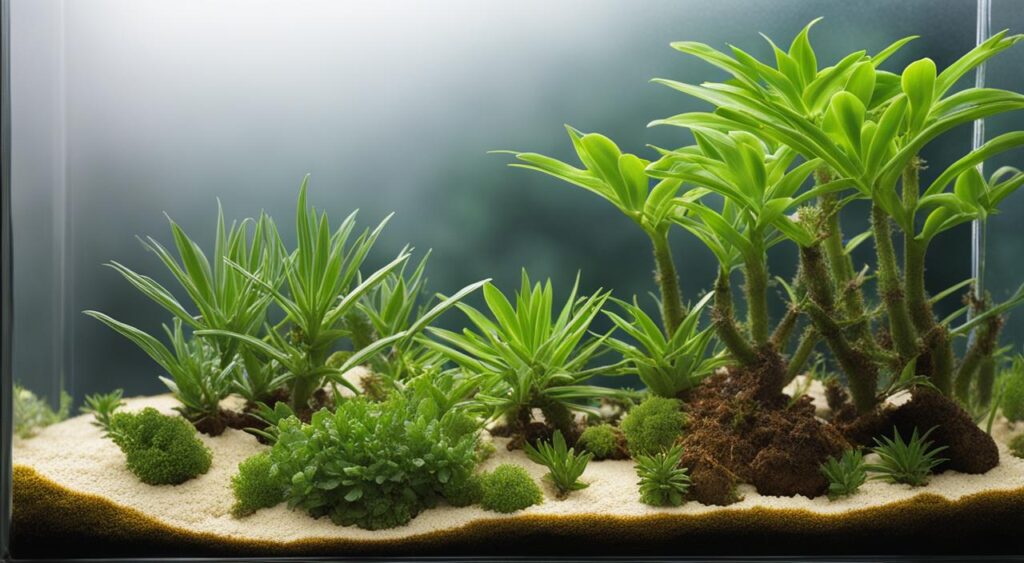
Proper care is essential for Lilaeopsis’s health and well-being. To ensure optimal growth and vitality, it is important to pay attention to several key factors, including planted tank parameters, water quality, filtration, and flow.
Planted Tank Parameters
Creating and maintaining suitable parameters in your planted tank is crucial for the success of Lilaeopsis. It is recommended to provide a stable water temperature between 72°F to 82°F (22°C to 28°C) and a pH level of 6.5 to 7.5. Lilaeopsis prefers moderately complex to slightly soft water, with a hardness range of 4 to 10 dGH.
Water Quality
Good water quality is essential for the health of Lilaeopsis. Regular water changes of 20-30% every 1-2 weeks will help maintain optimal conditions and prevent the build-up of harmful substances. It is crucial to test the water regularly for parameters such as ammonia, nitrite, and nitrate levels and take appropriate action if any issues are detected.
Filtration
Adequate filtration is necessary to keep the water clean and free from debris that may hinder the growth of Lilaeopsis. A high-quality aquarium filter with mechanical, chemical, and biological filtration capabilities is recommended. This will help remove excess waste, toxins, and other pollutants, ensuring a healthy and vibrant environment for your plants.
Flow
Proper water flow is vital to maintain adequate oxygenation and circulation in the aquarium. Lilaeopsis thrives in moderate water flow, which helps distribute nutrients and prevents the accumulation of debris. Consider using a powerhead or adjusting the placement of in-tank equipment to achieve the desired flow rate.
| Parameter | Ideal Range |
|---|---|
| Water Temperature | 72°F – 82°F (22°C – 28°C) |
| pH Level | 6.5 – 7.5 |
| Hardness | 4 – 10 dGH |
| Water Change Frequency | 20-30% every 1-2 weeks |
Aquarium Maintenance
Testing Water Conditions
Regular testing of water conditions is crucial for maintaining the health and well-being of your Lilaeopsis plants. Monitoring parameters such as pH, ammonia, nitrite, and nitrate levels is essential to ensure they are within acceptable ranges for your aquatic plants. Testing kits designed for aquarium water testing are readily available and provide accurate results. Regular monitoring and adjustments will help create optimal conditions for the growth and development of your Lilaeopsis.
How To Set Up Your Aquarium Tank
Setting up your aquarium tank properly is essential for the success of your Lilaeopsis plants. Start by choosing a suitable substrate, as Lilaeopsis thrives best in a nutrient-rich substrate. Use aquarium-specific substrate that is designed to provide essential nutrients to your plants. Place the substrate evenly across the bottom of the tank, ensuring a thickness of at least 2-3 inches to support root growth.
Next, provide adequate lighting for your Lilaeopsis. Opt for LED or fluorescent lights that emit a spectrum suitable for plant growth. Position the lights above the aquarium at a height and angle that ensures uniform coverage of the Lilaeopsis carpet.
Additionally, consider supplementing your tank with carbon dioxide (CO2) to promote healthy and robust growth. CO2 injection can be achieved through a pressurized CO2 system or liquid carbon supplements, depending on your preference and the specific needs of your aquarium.
Lastly, ensure proper filtration and water flow in your tank. A reliable filtration system will help remove pollutants, debris, and excess nutrients, promoting a clean and balanced environment for your plants to thrive. Proper water flow is essential for oxygenation and preventing the accumulation of stagnant areas. Use filters and pumps that provide adequate circulation throughout the tank.
Propagation Methods
Lilaeopsis can be propagated through two main methods: division and runners. Division involves separating new plantlets from the parent plant to create new individuals. Carefully remove a portion of the parent Lilaeopsis plant, ensuring each division has enough roots to establish itself. Plant the divisions in the substrate, allowing them room to grow and spread.
Runners are horizontal stems originating from the parent Lilaeopsis plant and producing new plants along their length. As the runners extend, they develop roots and shoot new plants from each rooting point. Allow the runners to grow and establish in the substrate; eventually, they will develop into independent Lilaeopsis plants.
Both propagation methods effectively create new Lilaeopsis plants and expand the carpet coverage in your aquarium. Regular monitoring and care of the newly propagated plants will ensure their successful development.
Health And Disease
Monitoring the health of your Lilaeopsis plants is vital to catching any issues early on. Ensuring their well-being and maintaining a vibrant and thriving aquarium is essential. This section will discuss the signs of good and poor health to help you identify any potential problems. Additionally, common health issues and their treatments will be addressed, along with an overview of plant pests that can affect Lilaeopsis.
Signs Of Good Health
Healthy Lilaeopsis plants exhibit several characteristics that indicate their well-being. Look for the following signs to ensure the continued vitality of your plants:
- Vibrant green leaves
- Steady growth
- Formation of new shoots
Signs Of Poor Health
Recognizing the signs of poor health is crucial in addressing any issues promptly. Look out for the following indicators that your Lilaeopsis plants may not be thriving:
- Yellowing leaves
- Wilting
- Slow growth
- Presence of algae
Common Health Issues And Treatment
Lilaeopsis can face several common health issues affecting their growth and overall health. These issues may include:
- Nutrient deficiencies
- Lighting imbalance
- Pest infestations
Addressing these issues promptly is vital to maintaining the health of your Lilaeopsis plants. Treatments may include adjusting lighting levels, providing targeted fertilization to address nutrient deficiencies, or using appropriate pest control methods.
Plant Pests
Like any other aquarium plant, Lilaeopsis can be susceptible to pests. Common plant pests that can affect Lilaeopsis include:
- Snails
- Algae
- Aphids
Regularly inspect your plants for signs of pest infestations, such as visible pests or leaf damage. Timely intervention with appropriate pest control measures can help protect the health and aesthetics of your Lilaeopsis plants.
Summary
In summary, Lilaeopsis is a versatile and low-maintenance aquarium plant that can bring beauty and vibrancy to your aquascape. With proper care and attention to lighting, water quality, and nutrient supplementation, you can ensure your Lilaeopsis thrives in your aquarium. It is essential to choose compatible tank mates that will not disturb or damage the plants, and regular monitoring of the health of your Lilaeopsis is essential for its long-term success.
Lilaeopsis’s grass-like appearance adds a natural and aesthetic appeal to your underwater landscape, making it a popular choice among aquarists. Its ability to form a dense carpet on the substrate creates a visually stunning effect. Additionally, the presence of Lilaeopsis offers functional benefits for fish and other aquatic inhabitants, providing them with hiding places and creating a more natural habitat.
With its low maintenance requirements and ability to thrive in various water conditions, Lilaeopsis is an ideal plant for beginner and experienced aquarists. By following the care guidelines outlined in this article, you can enjoy the beauty and benefits of Lilaeopsis in your aquarium, creating a captivating and low-maintenance underwater oasis.
FAQ
What is Lilaeopsis?
Lilaeopsis is a genus of aquatic plants in the Apiaceae family. It is commonly used as a decorative plant for the foreground of aquariums and is known for its grass-like appearance and ability to form a dense carpet on the substrate.
How many species of Lilaeopsis are there?
There are currently 12 accepted species of Lilaeopsis, including Lilaeopsis brasiliensis and Lilaeopsis mauritiana, which are commonly used in aquariums.
Where is Lilaeopsis native to?
Lilaeopsis is native to the Americas and can be found in various aquatic habitats such as marshes, swamps, and along the banks of streams and rivers.
What are the morphological characteristics of Lilaeopsis?
Lilaeopsis has thin and narrow leaves that grow upright and can reach a height of up to 5 cm. When planted densely, they form a dense carpet that resembles a well-manicured lawn.
Where is the best placement for Lilaeopsis in an aquarium?
Lilaeopsis is best suited for placement in the foreground of aquariums. It should be planted densely to achieve a carpet effect.
What lighting requirements does Lilaeopsis have?
Lilaeopsis requires moderate to high lighting to thrive. LED lights or fluorescent lights are recommended for aquariums housing Lilaeopsis.
What are good tank mates for Lilaeopsis?
Good tank mates for Lilaeopsis include small and peaceful fish, such as neon tetras, guppies, rasboras, and dwarf corydoras.
How should Lilaeopsis be fed and fertilized?
Lilaeopsis plants can benefit from regular fertilization using liquid fertilizers or root tabs. The recommended dosage and frequency of feeding will depend on the specific brand and type of fertilizer used.
Can CO2 injection enhance the growth of Lilaeopsis?
Yes, providing a steady supply of carbon dioxide can promote faster and lusher growth of Lilaeopsis. There are different methods of CO2 supplementation, including using a pressurized CO2 system or liquid carbon supplements.
What care parameters are important for Lilaeopsis?
It is important to maintain stable water temperature, pH, and hardness that are suitable for Lilaeopsis. Good water quality, adequate filtration, and water flow are also necessary for its health.
How should I maintain my aquarium with Lilaeopsis?
Regular aquarium maintenance includes testing water conditions, such as pH, ammonia, nitrite, and nitrate levels, to ensure they are within acceptable ranges. Setting up the aquarium properly and providing appropriate lighting and CO2 supplementation are also important. Propagation can be done through division or runners.
What are common health issues that may affect Lilaeopsis?
Common health issues for Lilaeopsis include nutrient deficiencies, lighting imbalances, and pest infestations. Prompt treatment and appropriate methods can help restore the health of the plants.
Is Lilaeopsis a low-maintenance aquarium plant?
Yes, Lilaeopsis is considered a low-maintenance aquarium plant that can create a beautiful and lush carpet in your aquarium with proper care and attention.

